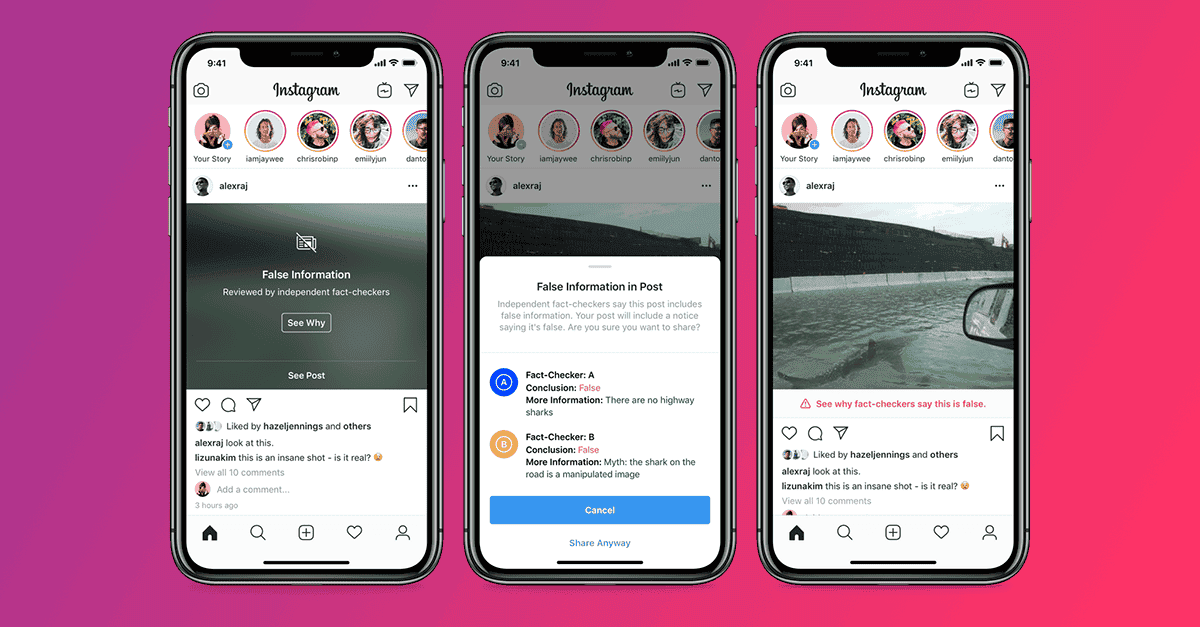In May 2019, Instagram began working with third-party fact-checkers in the US to help identify, review, and label false information. These partners independently assess false information to help us catch it and reduce its distribution. As of December 2019, Instagram is expanding the fact-checking program globally to allow fact-checking organisations around the world to assess and rate misinformation on the platform.
What does this mean?
When content has been rated as false or partly false by a third-party fact-checker, Instagram reduces its distribution by removing it from Explore and hashtag pages. In addition, it will be labelled so people can better decide for themselves what to read, trust, and share. When these labels are applied, they will appear to everyone around the world viewing that content – in feed, profile, stories, and direct messages.
How does it work?
Instagram use image-matching technology to find further instances of this content and apply the label, helping reduce the spread of misinformation. In addition, if something is rated false or partly false on Facebook, starting today Instagram will automatically label identical content if it is posted on Instagram (and vice versa). The label will link out to the rating from the fact-checker and provide links to articles from credible sources that debunk the claim(s) made in the post. Instagram makes content from accounts that repeatedly receive these labels harder to find by removing it from Explore and hashtag pages.
To determine which content should be sent to fact-checkers for review, we use a combination of feedback from our community and technology. Earlier this year, we added a “False Information” feedback option, and these reports, along with other signals, help us to better identify and take action on potentially false information.






